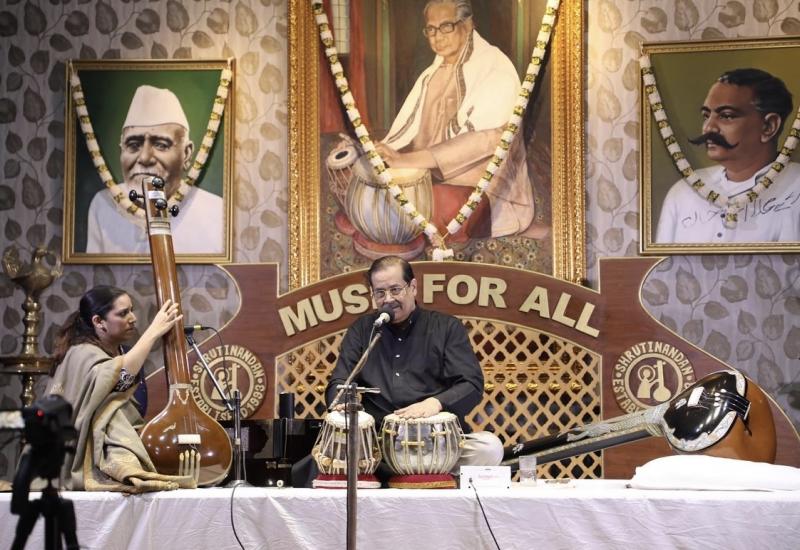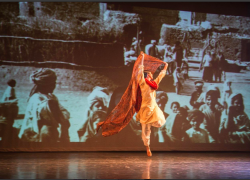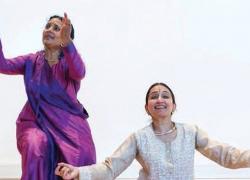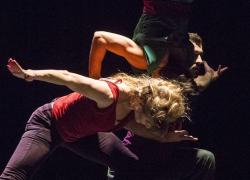Sooraj Subramaniam on Reflections of an Indian Dancer
London audiences are eagerly awaiting the autobiographical solo of the iconic dancer that will have its first outing in the capital of Friday 31 March at Waterman’s in West London. Pulse talked to Sooraj ahead of the performance on what makes the show unique.
Image credit: Tom Decuyper
Sooraj you are well-known both for your South Asian classical work and your 'balletesque' contemporary; do you keep each form separate or try to find commonalities between them?
Each of the styles has evolved around movement idioms and mechanical principles unique to its culture – I find deep satisfaction both in the honest, physical rigour and academic enquiry that honour these principles. But what we call separations between the styles are confected borders between things of smoke and beauty – where does one end, the other begin? There’s a quiet, unspoken space in which dance transcends grammar and syntax, where the heart takes over and allows the dancer and the danced to reverberate as one. And because it is unsullied by the politics of ‘yours-and-mine’ I like that space best.
Your musings on dance and life on social media are so well expressed that these suggest that you are a closet writer. Would you regard writing as an equal passion to dance?
I do enjoy writing – I’ve been inspired many times to write in a manner of abstraction that’s similar to the imaginings available via dance: a bending of words and twisting of phrases to paint things in the oblique. There’s a familiar rush of excitement when words land as dance steps do. But I’m nowhere near as well-read or well-practised in writing as I’d like to be. Writing is not a studied exercise; I dabble, if I’m being honest.
Could you share the name of your three favourite authors/writers?
Three!
I like Neil Gaiman for his style and narrative technique. Outside of the graphic novels, I think I may have everything he’s had published.
I fell in love with Arundhati Roy’s The God of Small Things. I was in my early-20s, you’ll forgive me.
Charles Belfoure for The Paris Architect.
The publicity indicates that 'Reflections of an Indian Dancer', is an autobiographical piece. How important is it to share your story? How did the director Balbir Singh help you in shaping the piece?
My story works as a backdrop against which the genealogies of the Indian dance styles (that I have in my repertoire) unfold. Although, how much history can one expound on over a coffee? How much would you want to? It’s like that.
I’m only sharing what I’ve seen and heard and felt, thereby freeing the work from encyclopaedic responsibility. At the outset Balbir’s direction was that the work had to speak plainly – to make accessible information about Indian dance that too often feels overwhelming. So the personal lens felt the least restrictive, the most honest. Balbir is a fount of ideas; he planted many of the seeds that then found shape through my experiences. Having developed a working relationship for well over a decade I enjoy his trust, and he’s handed me the responsibility of crafting the work to suit my temperament.
Could you tell audiences what they can expect from the show?
This is a story (stories?) about Indian dance as told through the experiences of one person. There’ll be glimpses of the histories and mythologies of Indian dance revealed through the performer's personal relationship with them. There'll be anecdotes and poetry, maps and magic, and silences that’ll hopefully allow you to journey along with the dancer. Whether you're a novice to dance and theatre or a connoisseur, if you enjoy poetry and mythology, storytelling and reminiscing, dance and its capacity for joy and expression, this work might be for you.
There are two more performances of Reflections of an Indian Dancer: London Watermans 31 March 2023 and Leeds Playhouse on 1 April


















